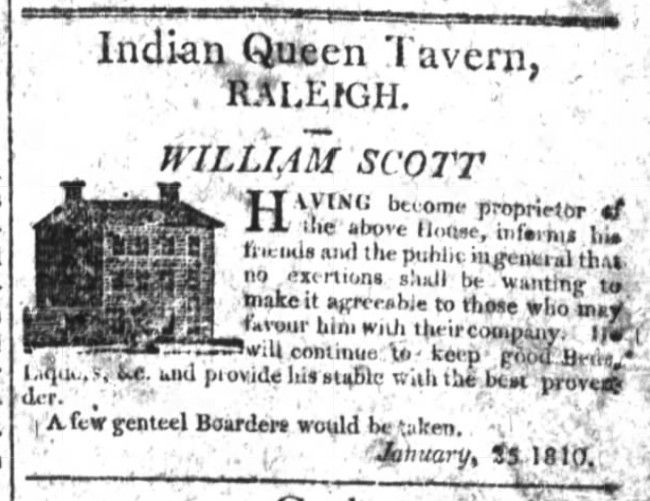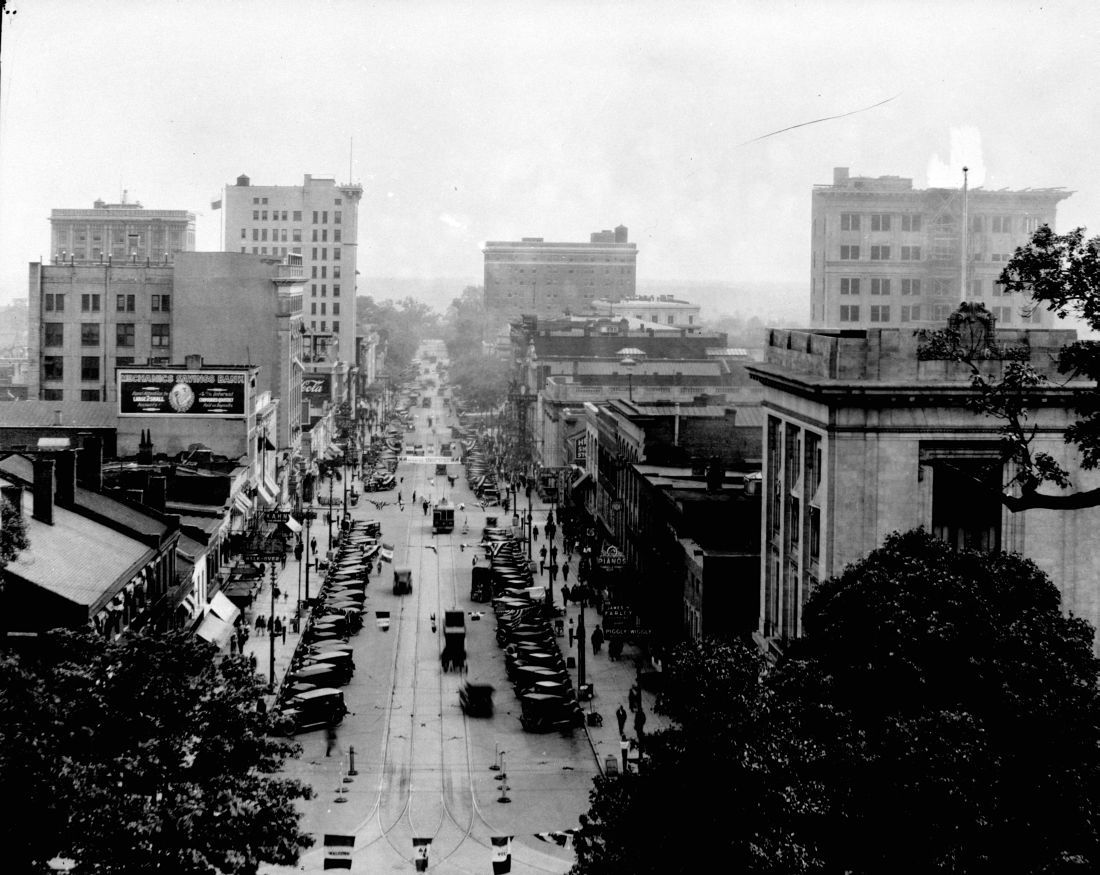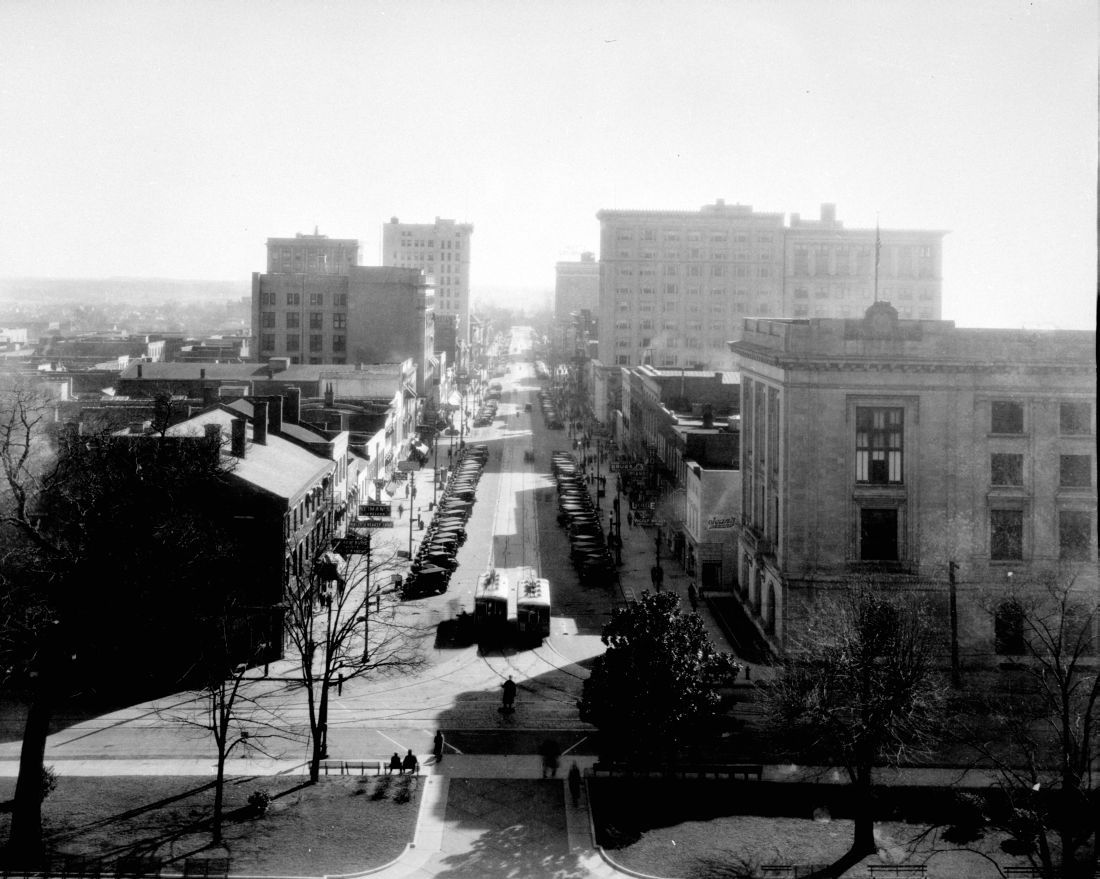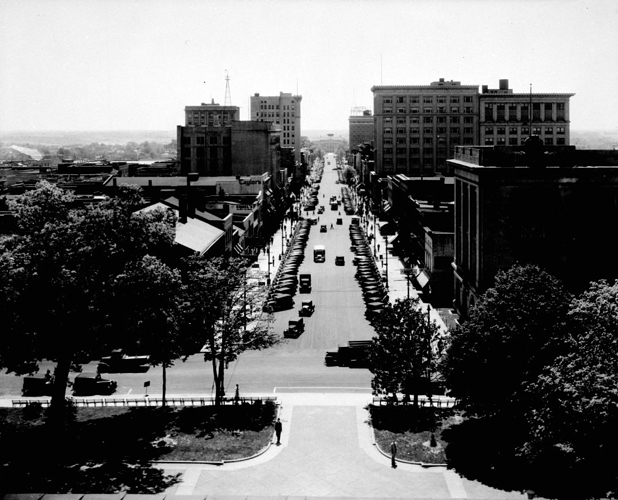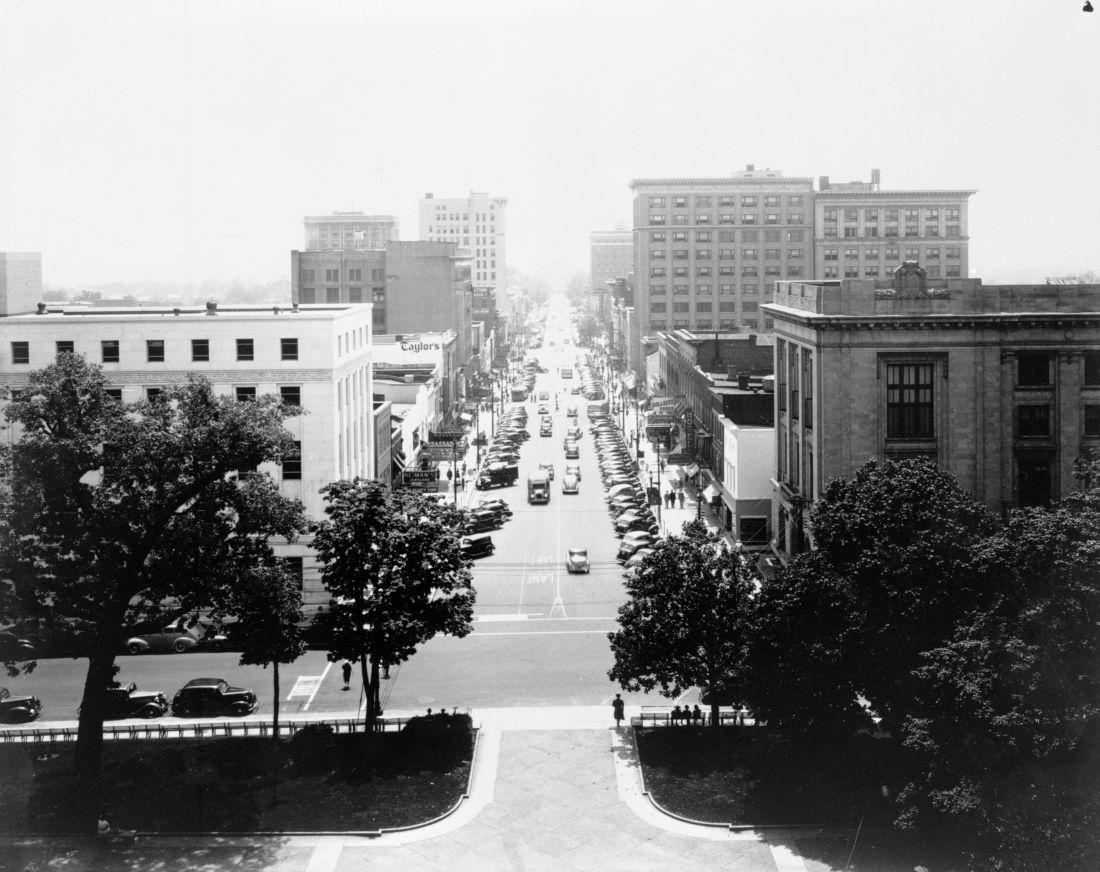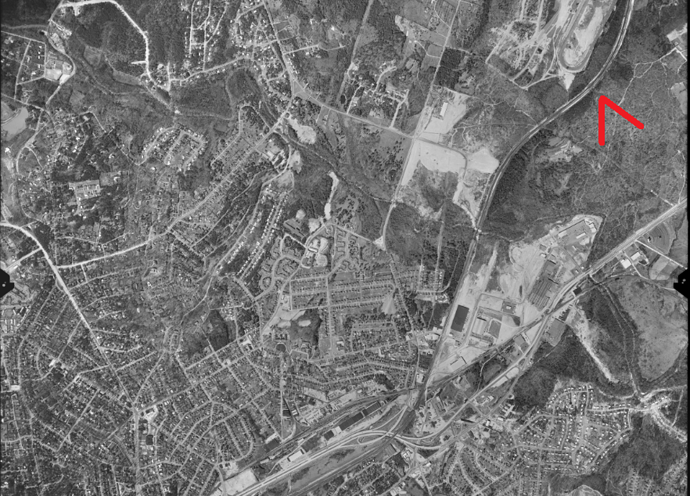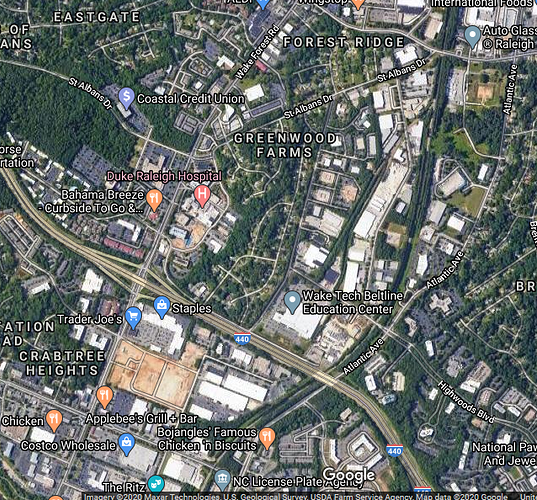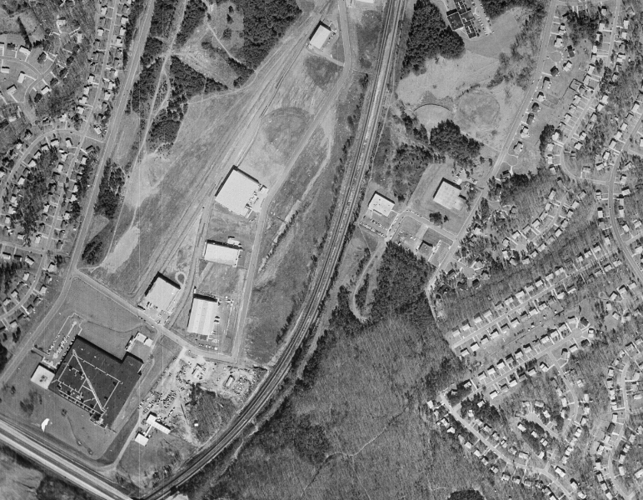
Drawing of Casso’s Inn by Hope Summerell Chamberlain for ‘The History of Wake County North Carolina, Raleigh, N.C.’: Edwards & Broughton Printing Company, 1922. Image from the North Carolina Museum of History.
Casso’s Inn was the largest and most popular hostelry in the early years of Raleigh. The inn (sometimes called a tavern) was best known for a traditional association with Andrew Johnson, seventeenth president of the United States. Built between 1790 and 1795 by Peter Casso, who had come to Raleigh from Beaufort County, the inn stood on the northeast corner of Fayetteville Street (Lot 162 in the plan of the city) diagonally across from the statehouse. Its only competitor was the Indian Queen, which it quickly surpassed in patronage and size. Despite the popularity and apparent success of his inn, Peter Casso proved to be an inefficient businessman. By 1799 he had established a pattern of indebtedness from which he would never recover.
Local tradition maintains that Andrew Johnson’s mother, Mary “Polly” McDonough, worked at Casso’s Inn as a weaver before she married Jacob Johnson, and that Andrew was born in one of the kitchens then serving as the Johnsons’ home. Extensive research neither upholds the truth of the story nor proves it false beyond a doubt. In the absence of conclusive evidence to the contrary, the tradition will continue to claim a place in the history of Casso’s Inn.
https://www.ncpedia.org/inns-and-taverns
From UNC History Professor Kemp Plummer Battle’s 'The Early History of Raleigh, the Capital City of North Carolina: A Centennial Address (October 18, 1892) -
‘The earliest taverns were Casso’s, next to the Capitol Square on the south, on the east side of Fayetteville street; the Indian Queen, kept by Captain Scott on the site of the Federal court-house and post-office; the Eagle Hotel, built in 1812 by Charles Parish, of three stories, the first brick-house, according to Govern Swain, in the city, with the exception of the State-house, located north of Union Square, and existing to this day, improved and remodeled into the State Agricultural Building.’
(Advertisement for the Indian Queen Tavern in the North Carolina Star newpaper, dated 25 Jan 1810.)
'John Stewart, the merchant, so called to distinguish him from John Stewart, the blacksmith, is said to have been the first to open a store for business. He married Hannah, the daughter of Peter Casso, the hotel-keeper. When President Johnson was born his fahter was an hostler at the hotel, and Mrs. Casso gave the name to the new-born child. It was intended to call him Andrew Jackson Johnson, but his father objected to have so long a name, and the Jackson was omitted."
‘About the year 1800 a new court house was erected on the Fayetteville street site - rectangular, of wood, of the shape of the old-fashioned country meeting-house. This was sold about 1835, and removed bodily to the southeast corner of Wilmington and Davie streets, and was for a long time a family residence, and then Cook’s hotel. The brick structure which replaced it [the courthouse] was built in 1835, and remodeled in 1882, at which time the statue of Justice was placed over its front as a guardian and monitor.’
Most of the talk of Battle’s presentation in 1892 was of the venerable Yarborough House and the then brand-new Park Hotel.
Summerill goes further about Cooke’s/City Hotel at 401 S Wilmington (currently the Red Hat Building) - 'As late as 1803, Henry H. Cooke advertises that living at ‘Wake old Court-House, about a quarter of a mile of the State-House, he can accomodate 10 or 12 gentlemen with board during the [legislative] session, and will take a few horses to feed at 2s.6d. (25 cts) a day.’
‘A gentleman tells me that many years ago he was at Cooke’s Hotel, when besides himself Chief Justice [John] Marshall and Judge [Duncan] Cameron were the only guests. A traveler drove up and asked for quarters. The answer was, “I can’t take you, I am full.” The furniture of Judge Marshall’s room consisted of a bed and bedstead, two split-bottom chairs, a pine table covered with grease and ink, a cracked pitcher and broken bowl. The next morning when breakfast came on, the host, disdaining the use of forks, transferred them from the dish to his plate pieces of dismembered fowl with his fingers.’
